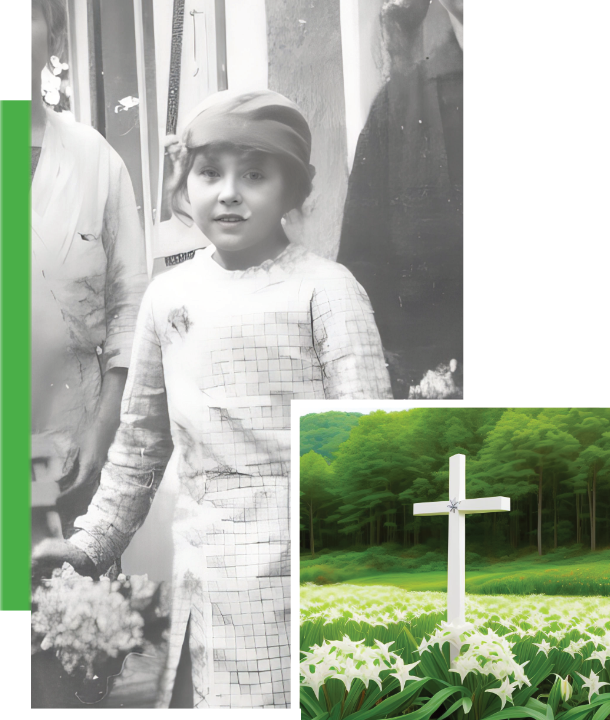09/05/2023

 Autobiographical poetry
Autobiographical poetryA fundamental text for understanding Elise's incredible joy. Take your time to read these ten verses of extraordinary beauty and freshness. Elise was 22 years old when she composed this poem.
 Elise’s joy
Elise’s joy The poem above was written as an adult. However, Elise reveals in it a specific grace that was given to her in her childhood: joy.
Joy is a pillar of Elise's spirituality: without it, one cannot understand Elise's strength or contemplation. Joy is her special charisma.
All Friends of God know joy; for Elise, however, joy was seen and received explicitly. Joy was the direct effect of Jesus' love for her. Is there anything more beautiful than knowing oneself loved? For Elise, nothing can equal the certainty of being loved.
Joy is thus omnipresent in Elise's poems and songs. Two poems and one song are specifically dedicated to her, and she is named in about twenty others.
Her first biographer, the Dominican Father Jourdain Bochin, had noticed Elise's joy. In the preface to the first edition of the poems, he quotes a verse from the "Joyful Song."
During her life, Elise spoke of a true science of joy.
First of all, Elise perceived in nature a constant call to joy. As an example, Elise gives the image of the lark that sings and rises in the air without weakening. She makes this country bird a metaphor for her flight to God, a model to follow.
Then, in her inner life, joy was a weapon to carry out the spiritual combat, to rise towards God in spite of all adversity.
Finally, this inner joy explains Elise's permanent smile, so much so that everyone noticed it.
Elise wanted to transmit the faith through a smile. Her smile so deeply impressed the memory of the children in catechism that some, even today, remember her radiant face. In a letter she says:
To her spiritual father, recently appointed to the parish of Saint Florentin, and who was having some difficulty establishing good relations with his new parishioners, Élise recommended smiling as the most effective way to create the much-sought-after friendship.
And to a dear friend, a nurse by profession, Elise speaks of the smile as a powerful radiance in the workplace:
Over the years, Elise never stopped using her smile and her joy to the point of explaining the “science of joy’ with the constant challenge of transmitting it to others:
Elise was one of those rays of light sent by God; she shone in her village, in her parish and in the hearts of children. She was, through her acceptance of divine Love, a true “doctor” in the science of joy.
It is this state of mind of Elise which explains all her love for children and her relationship, also very singular, with nature.




